Support Village Voice News With a Donation of Your Choice.

…launches five-year strategic plan
By Svetlana Marshall
The Ministry of Health launched the HIV National Strategic Plan (HIVision 2021-2025) on Tuesday, with the Health Minister, Dr. Frank Anthony acknowledging that Guyana, despite many successes, has a far way to go in achieving the United Nations’ target of eliminating the Acquired Immunodeficiency Syndrome (AIDS) by 2030.
The National HIV Strategic Plan (HIVision 2025) is a comprehensive roadmap that would guide the country’s response to HIV over the next five years, and will serve as a tool to mobilise the resources necessary for sustaining the HIV response in an environment of rapidly declining external donor funding.
During the virtual launch, the Health Minister said Guyana must first achieve the globally set 2020 targets before it could achieve the 2025 targets. In its quest to end the AIDS epidemic by 2030, UNAIDS had said that by 2020, 90% of all people living with HIV should know their HIV status; 90% of all people with diagnosed HIV infection should receive sustained antiretroviral therapy; and 90% of all people receiving antiretroviral therapy should have viral suppression.
But here in Guyana only the first 90 per cent was achieved. According to the Health Minister, 94% of all people living in Guyana know their status, however only 73% of those diagnosed with HIV are receiving sustained antiretroviral therapy and 75% of those on therapy, have viral suppression.
“…that (means) we have a lot of work to be done over the next five years, if we are to get what was the 2020 target and move beyond that to achieve what we aspire for in 2025,” Dr. Anthony said.
According to him, stock-outs of critical medicines and reagents have interfered with the treatment and care programme, posing significant challenges over the years.
“This is something that we have to work to minimize, so that we don’t have stock-outs, and if we have them, we have minimal interference with our programme but to do so would require concerted efforts on a number of players within the ministry…”the Health Minister said.
He added: “We also had problems with stock-out of reagents and because this, a lot of the tests that were supposed to be done, were not able to do them. We had problems with testing kits, and here again this would have interfered with our protocols for testing, so this is something that we have to fix.”
He emphasized that existing problems must first be resolved, so that the country could move ahead with the plans embedded in HIVision 2025. Those plans include Combination Prevention Therapy, a comprehensive PrEP programme and self-testing.
Dereck Springer, the Health Ministry’s Consultant, explained that HIVision 2025 was developed based on the Mid-Term and End-of-Term evaluation of the National HIV Strategic Plan 2013-2020 (HIVision 2020), in addition to extensive consultation with stakeholders and in-depth analysis of available data.
Springer said the end-of-term evaluation concluded that there was no change in the epidemic over the last 5 years.
“The prevalence has plateaued at 1.5% in the last five years, with a small decline to 1.4% in 2018,” he pointed out. However, he said there remains a strong political commitment and an enabling environment to accelerate the national AIDS response towards ending AIDS and eliminating mother-to-child transmission. He posited that all the necessary structures, policies, and guidelines are in place but there is need for strengthening.
“Thus far, the national response has achieved several milestones and successes in various areas. These include achieving the first 90 of the UNAIDS 90-90-90 targets (90% of all persons living with HIV who were tested for HIV and know their status), initiating integration services, forging Public-Private Partnerships for HIV prevention, treatment and care including PMTCT, introduction of PrEP, piloting and expanding social contracting and significant progress towards the elimination of mother-to-child transmission (EMTCT),” Springer detailed.
He said too that the country efficiently managed transitioning and sustainability and domestic financing efforts following the rapid decline in donor resources, all while adopting global best practice models and guidance to improve access and quality of services, so that no one is left behind.
Further, the Consultant pointed out that Government resources for the HIV response increased 5.9 folds from USD 0.55 million in 2013 to USD 3.80 million 2019, while donor funding reduced by 42% from USD 11.4 million in 2013 to approximately USD 2.87 million in 2019.
In 2013, external and domestic funds accounted for 74.7% and 25.4% of HIV funding, respectively. However, in 2019 domestic HIV funding accounted for 60.7%, while external funds accounted for 39.3%. This, he said, represents the Government of Guyana’s commitment to the HIV response by funding programme areas previously financed by external donors.
However, he said despite these achievements, the response is still faced with numerous challenges that need to be resolved immediately including dysfunctional coordination structures, high level of stigma and discrimination resulting in gender-based violence and death, verticalization of management of HIV, high loss to follow up, increasing AIDS-related mortality, weak paper-based monitoring and evaluation system, and frequent stock outs due primarily to the protracted process for procurement.
















